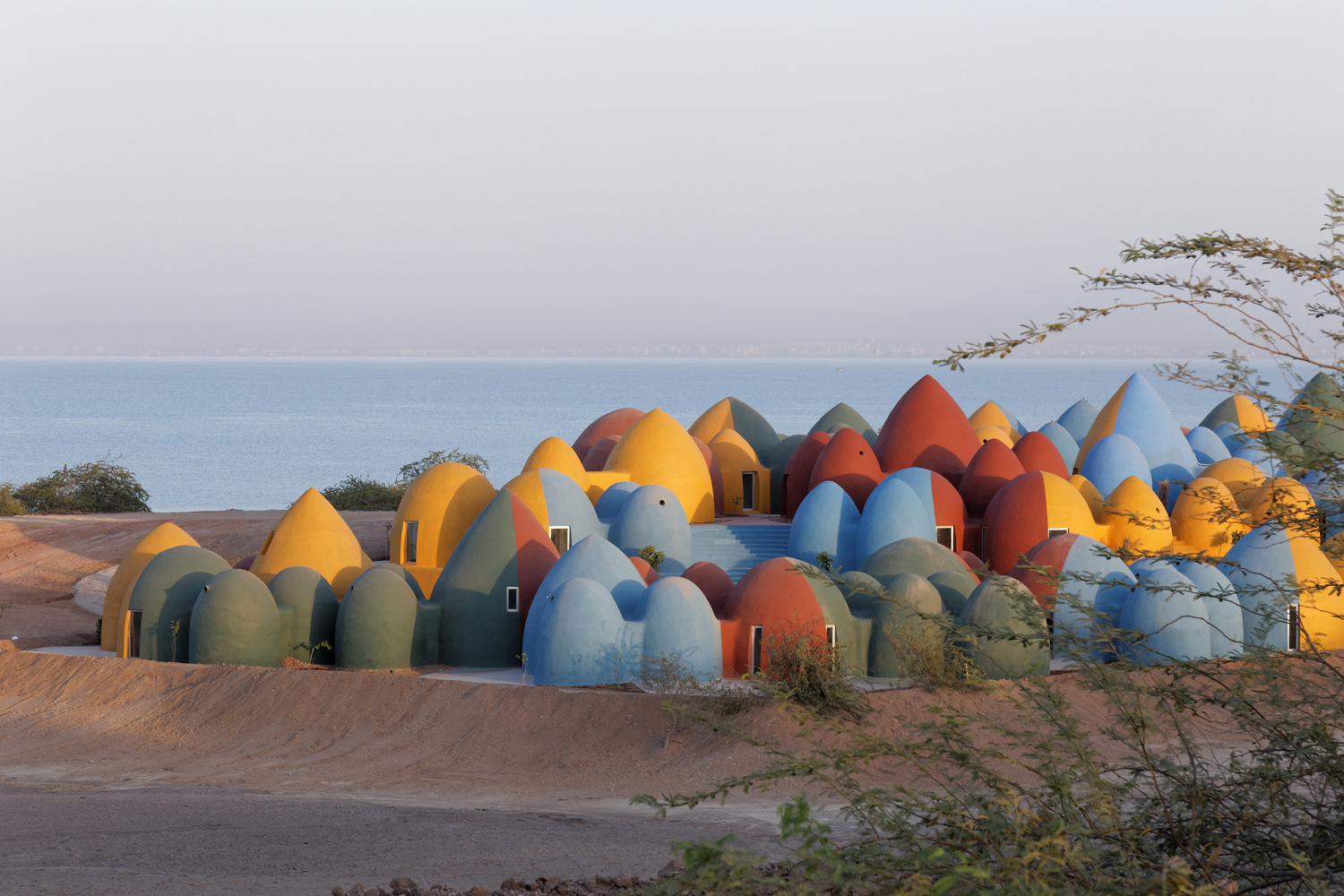Colorful Rammed Earth “Super Adobe” Community in Iran
The colorful rammed earth domes created by Iranian architects, ZAV architects, encompasses more than a vibrant mountainscape community of residences, prayer spaces, tourist centers and community structures.

These unique buildings were created with sustainability and increased development of the economy on Hormuz Island, located south of Iran, as the focal point behind their creation.
Although a popular tourist site, the island has suffered economic hardship, even resulting in illegal trafficking to and from the island ports. The rammed earth structures use materials directly from the island to focus their efforts towards the payment of laborers wages. Additionally, this reduces the overall cost and utilizes the islands natural resources.

As we know from other projects using rammed earth and natural materials taken directly from sites where the structures are built upon, there are numerous benefits to creating structures made of these contents. Some of these benefits include natural insulation and cooling techniques, protection from weathering, affordability, and multi-use of the building.
In terms of aesthetics, their multi-colored hues and curved shapes integrate with the already versatile landscape of the island. The style of small-scale buildings placed in a cluster formation are coined as using the “superadobe” technique developed by iranian-born architect Nader Khalili.
The small-scale form makes it easier for locals to build these structures based on skill set and expertise. Through the creation of these domes, many of the unskilled workers and local craftsmen are now “trained master superadobe masons,” accordingly to ZAV architects.